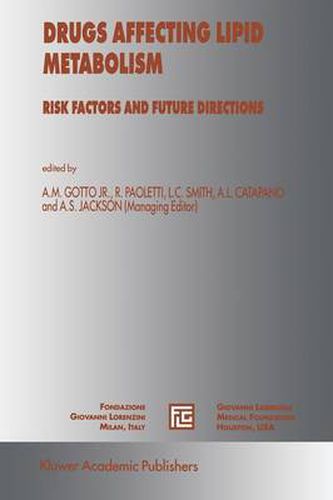Readings Newsletter
Become a Readings Member to make your shopping experience even easier.
Sign in or sign up for free!
You’re not far away from qualifying for FREE standard shipping within Australia
You’ve qualified for FREE standard shipping within Australia
The cart is loading…






This title is printed to order. This book may have been self-published. If so, we cannot guarantee the quality of the content. In the main most books will have gone through the editing process however some may not. We therefore suggest that you be aware of this before ordering this book. If in doubt check either the author or publisher’s details as we are unable to accept any returns unless they are faulty. Please contact us if you have any questions.
Even a brief scan of the table of contents of the present volume is enough to disclose the diversity of research interests and opinions in the field of lipidology. It is precisely this diversity that is the strength of our field and that was showcased by the XII International Symposium of DRUGS AFFECTING LIPID METABOLISM (DALM). The papers published here from these proceedings may be divided into three categories: those that define-and refine—our understanding ofthe clinical benefit of aggressive lipid management, those that develop our knowledge of ris!. assessment, and those that discuss the genetic, bio~hemical, and biophysical mechanisms underlying the pathology of coronary heart disease. On the clinical front, further analysis of the results of the Scandinavian Simvastatin Survival Study (4S) has indicated the cost-effectiveness of therapy in patients with established coronary heart disease. The West of Scotland Coronary Prevention Study (WOSCOPS), whose methodology was described at the DALM XII symposium, has demonstrated in a mostly primary-prevention population what 4S demonstrated for secondary prevention the year before: aggressive lipid-regulating therapy reduces coronary heart disease morbidity and mortality rates without concurrently increasing mortality from noncardiovascular causes. In the future, important considerations will be to develop protocols that maximize benefit in groups underrepresented in traditional clinical research for example, women and the elderly-and to improve compliance to existing treatment regimens. Furthermore, antioxidant, omega-3 fatty acid, and gene therapies warrant further investigation.
$9.00 standard shipping within Australia
FREE standard shipping within Australia for orders over $100.00
Express & International shipping calculated at checkout
This title is printed to order. This book may have been self-published. If so, we cannot guarantee the quality of the content. In the main most books will have gone through the editing process however some may not. We therefore suggest that you be aware of this before ordering this book. If in doubt check either the author or publisher’s details as we are unable to accept any returns unless they are faulty. Please contact us if you have any questions.
Even a brief scan of the table of contents of the present volume is enough to disclose the diversity of research interests and opinions in the field of lipidology. It is precisely this diversity that is the strength of our field and that was showcased by the XII International Symposium of DRUGS AFFECTING LIPID METABOLISM (DALM). The papers published here from these proceedings may be divided into three categories: those that define-and refine—our understanding ofthe clinical benefit of aggressive lipid management, those that develop our knowledge of ris!. assessment, and those that discuss the genetic, bio~hemical, and biophysical mechanisms underlying the pathology of coronary heart disease. On the clinical front, further analysis of the results of the Scandinavian Simvastatin Survival Study (4S) has indicated the cost-effectiveness of therapy in patients with established coronary heart disease. The West of Scotland Coronary Prevention Study (WOSCOPS), whose methodology was described at the DALM XII symposium, has demonstrated in a mostly primary-prevention population what 4S demonstrated for secondary prevention the year before: aggressive lipid-regulating therapy reduces coronary heart disease morbidity and mortality rates without concurrently increasing mortality from noncardiovascular causes. In the future, important considerations will be to develop protocols that maximize benefit in groups underrepresented in traditional clinical research for example, women and the elderly-and to improve compliance to existing treatment regimens. Furthermore, antioxidant, omega-3 fatty acid, and gene therapies warrant further investigation.